Born in Maglie (Lecce) in 1968, Mario Consiglio, an Umbrian artist, lives and works between Berlin and Perugia. He made his debut towards the end of the 1980s and then fine-tuned his own language, working with various techniques and experimenting a lot with lycra, the material with which he created his “padded paintings” that represent his best-known and most appreciated production. A graduate of the Academy of Fine Arts in Urbino, he is an academic of merit at the ’Pietro Vannucci’ Academy of Fine Arts, Perugia. He has exhibited in numerous private and public spaces in Italy and abroad, including: Grimmuseum (Berlin), Trolley Gallery (London), Galleria Carbone (Turin), Galleria Seno (Milan), Palazzo Bricherasio (Turin), Centro Pecci (Prato), Galeria Villena (Havana), Studio Visconti (Milan), Galleria Pio Monti, (Rome), Studio La Città (Verona), Museo Laboratorio (Città Sant’Angelo, Pescara), MACRO (Rome), Fondazione Sandretto Re Rebaudengo (Turin), Gran Central Terminal (New York), Art in Perpetuity Trust (London), British Institute (Rome), Spiral Hall (Tokyo), Art Basel, Palazzo Reale (Naples), Flash Art Mueseum (Trevi, Perugia), CIAC (Foligno, Perugia), Rare Ofiice (Berlin), Fondazione Querini Stampalia (Venice), White Spider Col Condesa (Mexico City), Nolias Gallery (London). He tells us about his art in this interview with Gabriele Landi.

GL. For most artists, childhood represents the golden age when the first symptoms of a certain inclination to belong to the art world begin to appear. Was that the case for you as well?
MC. I was six years old when at a dinner party at my parents’ friends’, where I was probably bored, I began to model an elephant out of breadcrumbs and the hostess was surprised at the result and asked me to make her a cow and I succeeded easily, then a squirrel and I made that too, then she turned to my mother with the sculptures in her hand to announce that she had an artist son. This is what my mom told me, I just remember the fireplace burning with my little operas leaning on it and a lady laughing. However, I think the input was given to me by my father who in his spare time with friends would go to paint with Master Rossi, an “exotic” painter who had lived in Africa. We were staying in Città di Castello, mid-1970s, Burri was going crazy and my father and friends were making paintings with burned plastics from which they made subjects that in retrospect today were interesting, between Soutine and Burri I would say. I was too small for fire so I would paint landscapes on canvases that Master Rossi would hand me. Father took me to the Albizzini Foundation educating me in a free and experimental art. In Burri’s black plastics I used to see caves with bats and mysterious places, there was fascination in it all.
What studies did you do?
After classical high school in Cortona, I went to Urbino. I was convinced by Claudio Boccolacci, an abstractionist painter with a passion for kites who was teaching at the academy; I met him around Ginezzo, in the Cortonese mountains, while he was building a trap for a viper. He had arrived in an Ape50 from Urbino, it took him a long time he told me. He had never had a car license. We made friends, I showed him my drawings, and he told me I could be an artist, so I took and passed the exam to get into Urbino, and so the adventure began. To find oneself catapulted from a classical high school to an avant-garde academy like Urbino was something unreal. I felt the daimon growing, I had a purpose, death or glory I was going to be an artist.

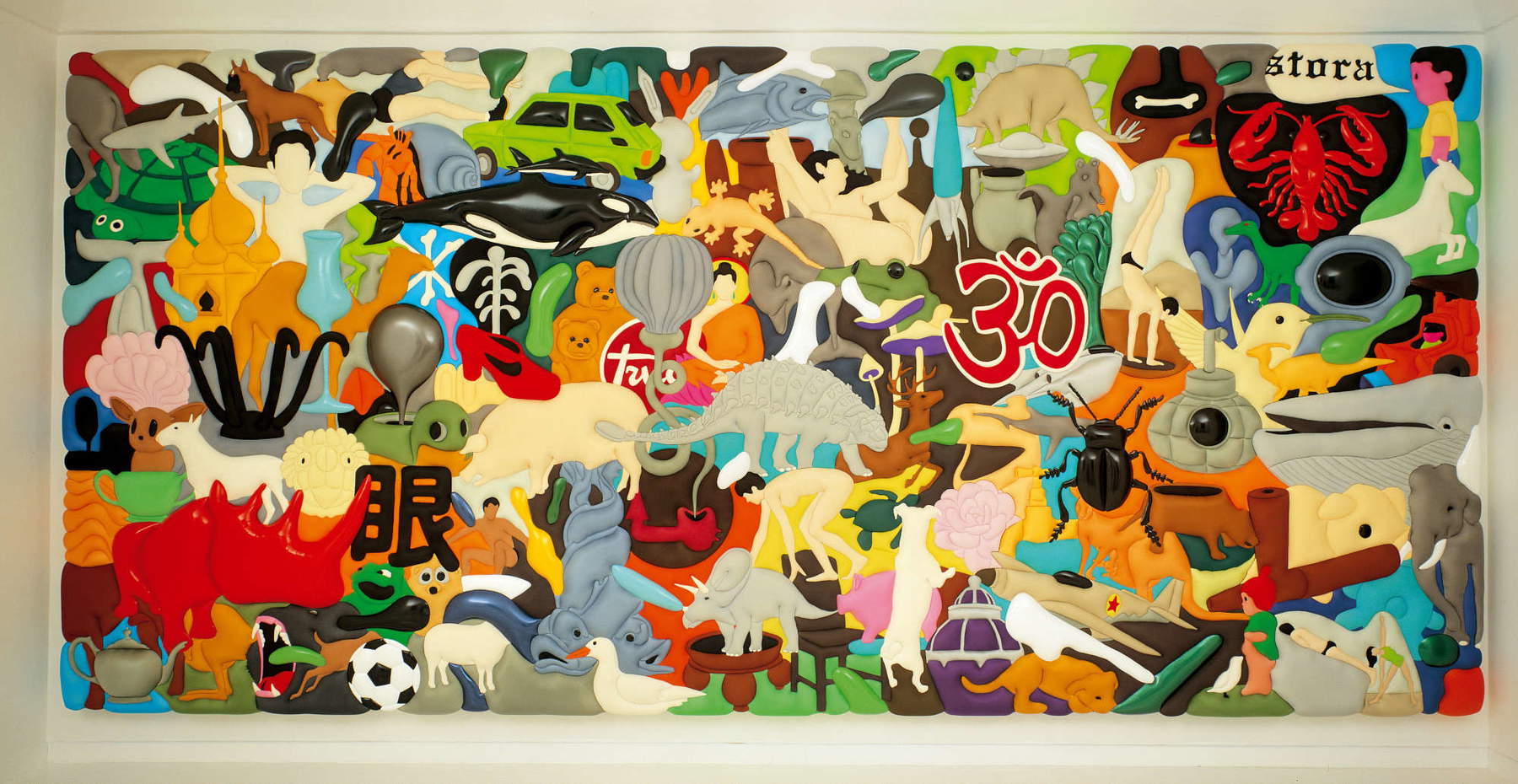


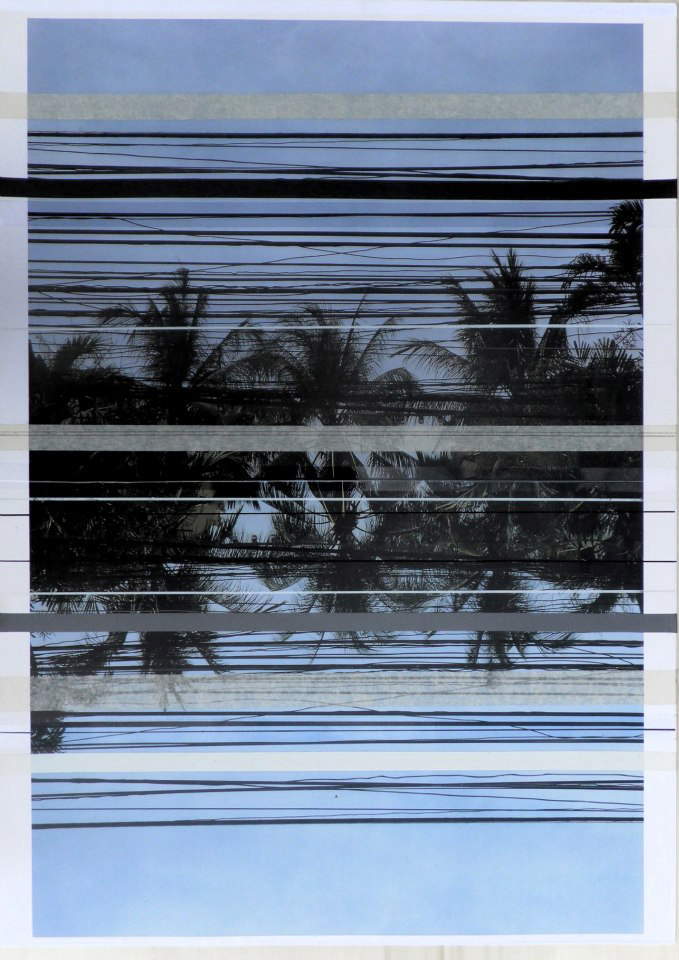
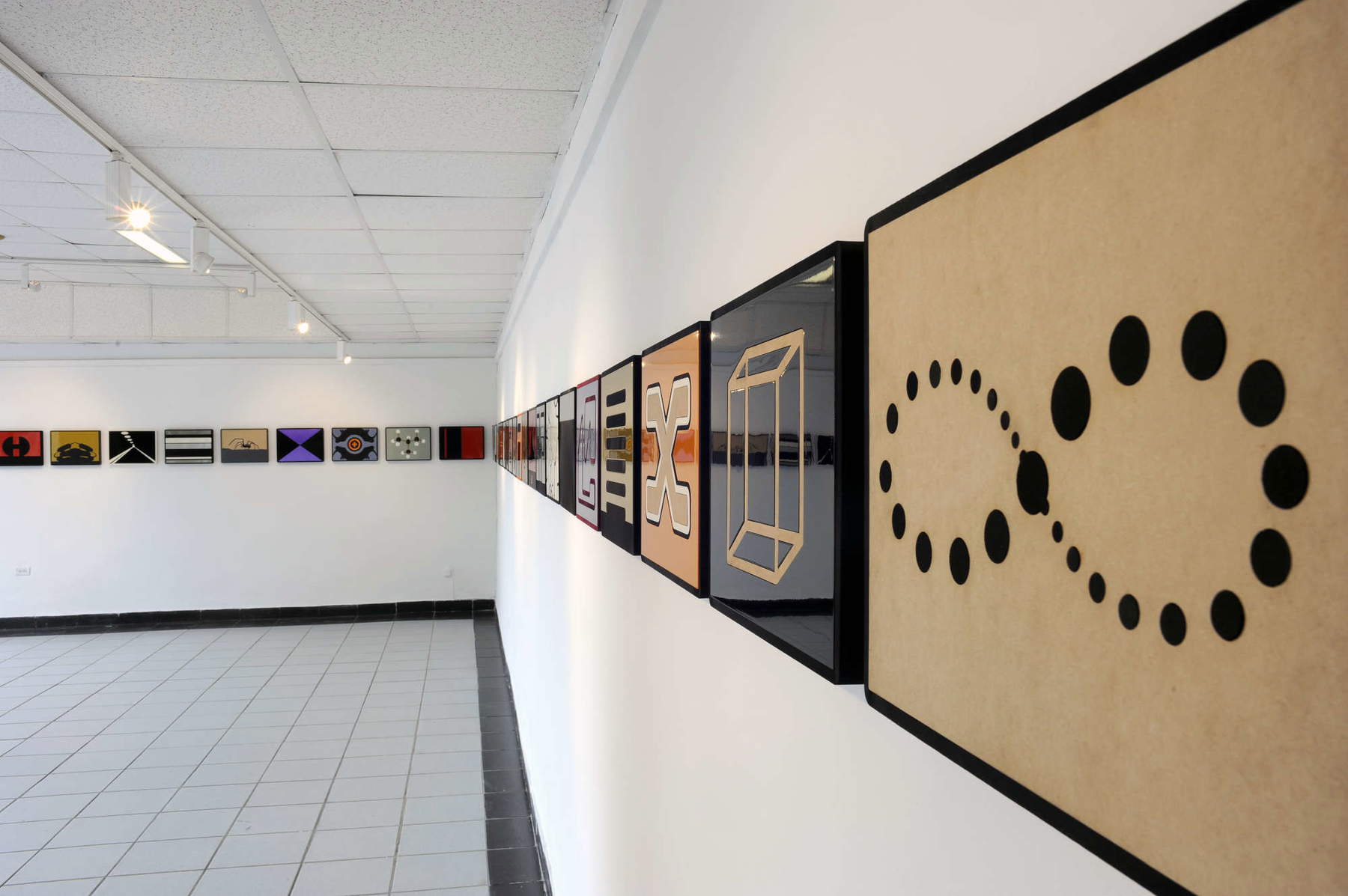
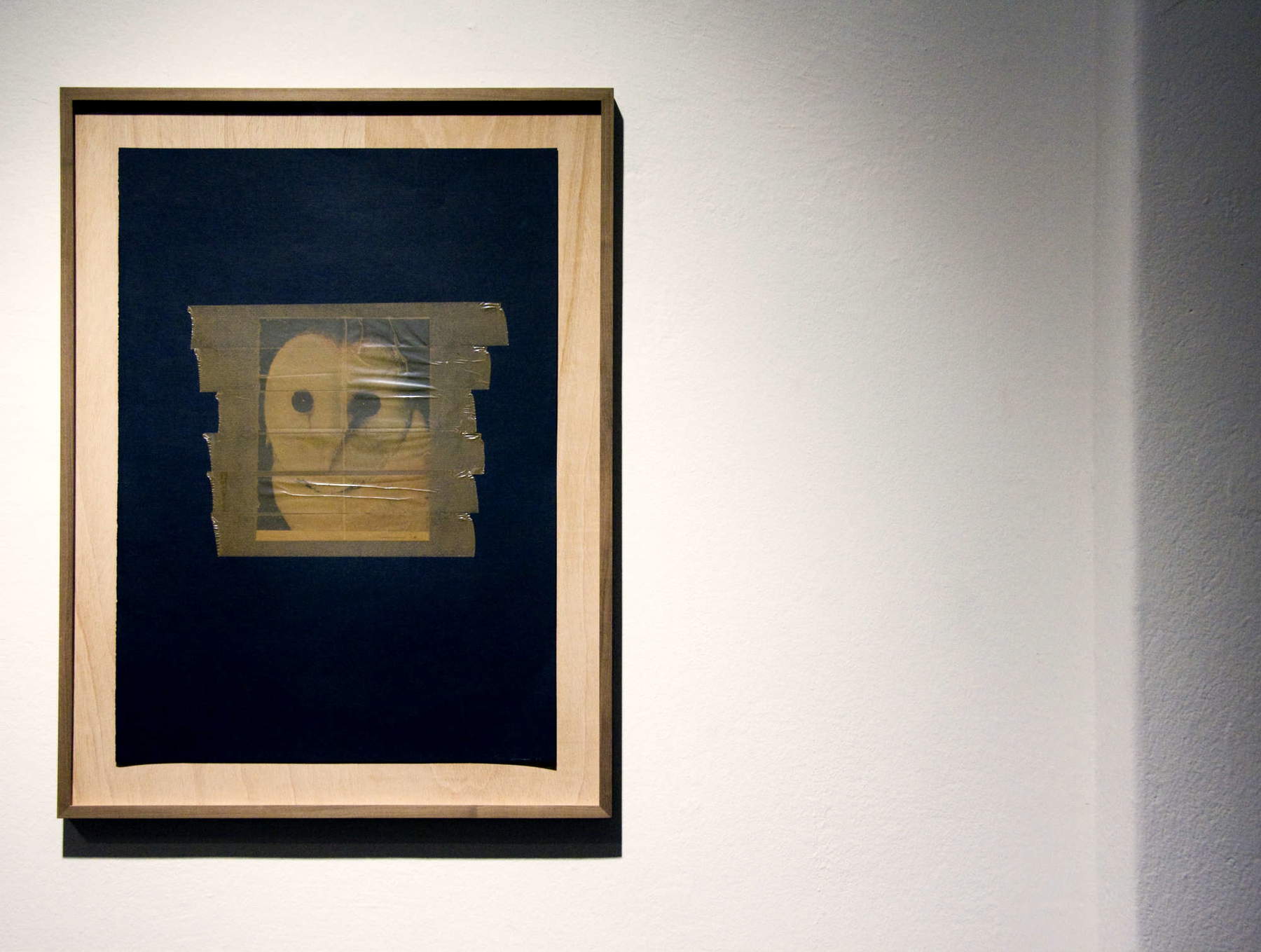
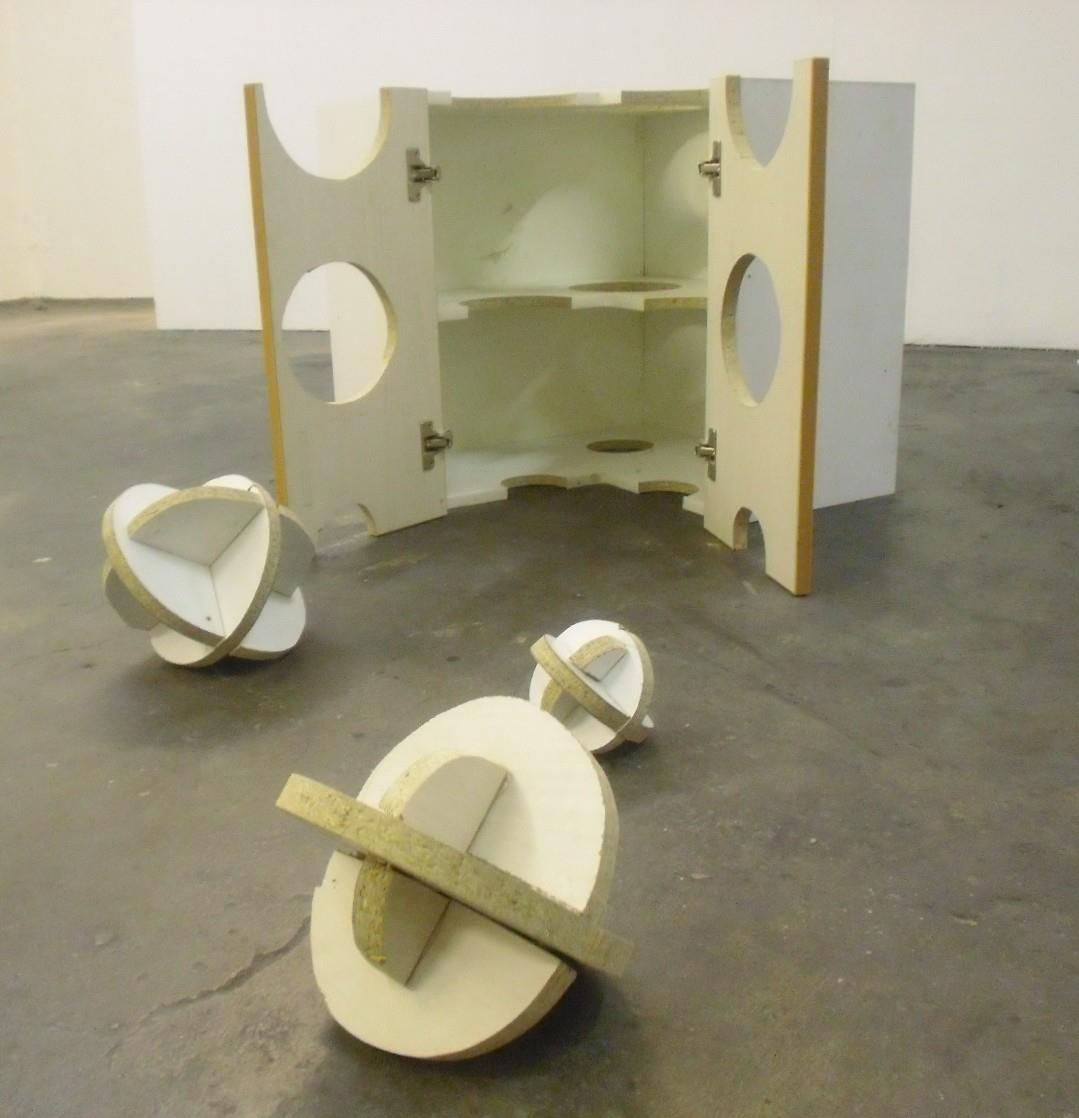

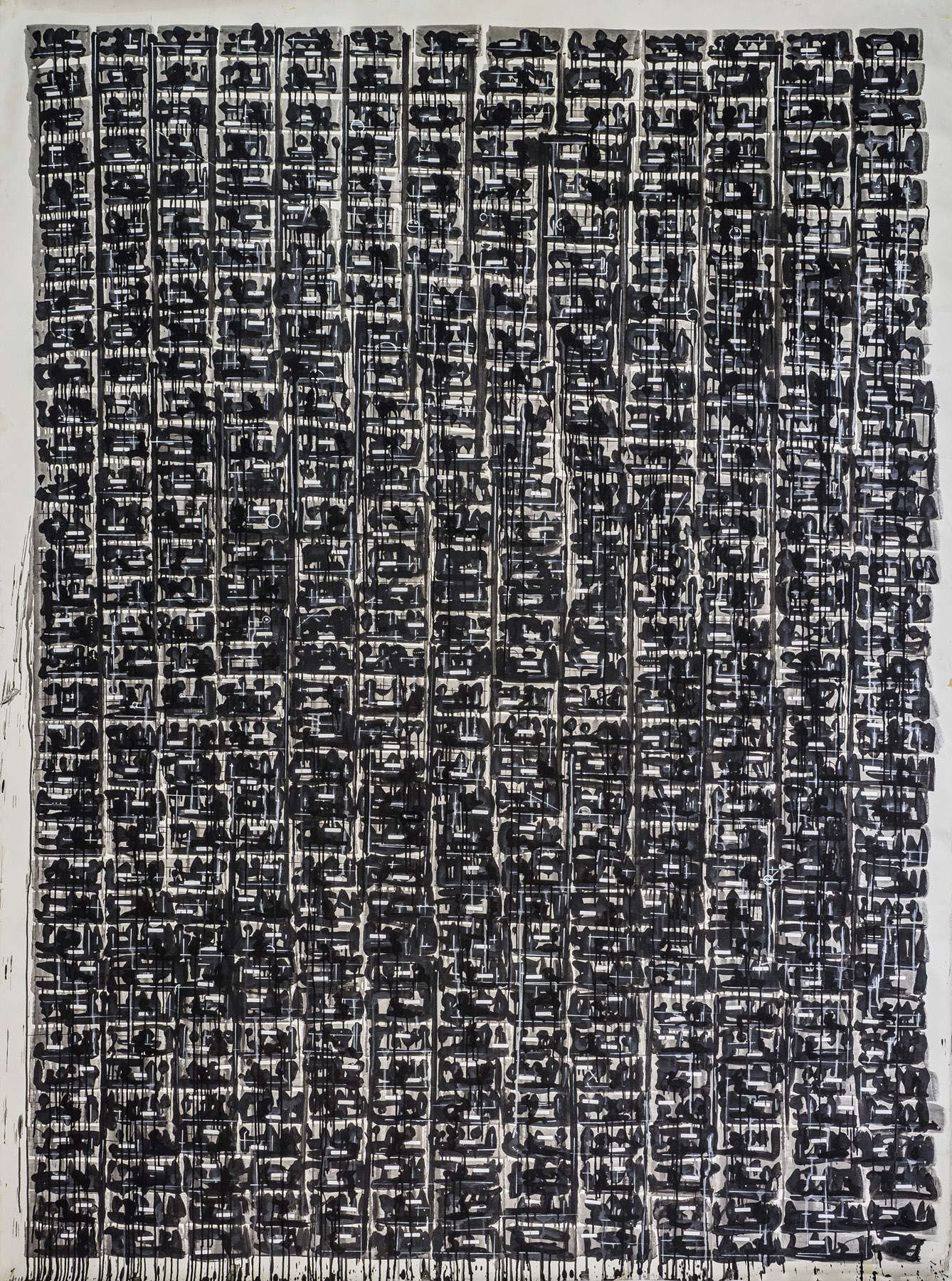
Were there any important encounters during your training?
Painting in Urbino was a nice psychiatric ward. The first friend was Davide Banda, with whom I still collaborate today. He was the best, even Pier Paolo Calzolari said so, so it was true. Banda refused to be an artist, he found the commercialization of art illogical. We all tried to convince him to change his mind but there was no way. On the other hand, he always wrote brilliant poems that he never wanted to publish and made amazing drawings, especially those he did in India in the 1990s. I could write a book just about him but I will just say that he was my roommate for all four houses we were kicked out of during those years. Another brother, who sadly left us eleven years ago, was Andrea Di Marco, a painter out of Palermo, also a roommate and fellow rambler. We miss Andrea very much; his passing was a trauma for everyone. Then we made friends with Antonio Paoloni. It took a while to break the ice with him because of the introverted nature he had but then we became inseparable friends. Di Marco often annoyed Paoloni, who would get pissed off like a beast and chase after him, sometimes throwing blunt objects at him; a skit that was often repeated. Today Paoloni, besides being a top designer, has been one of my best friends and collaborators for thirty years; without him much of my work would not be there...so thank you Pablo. Other people who joined the band were Fulvio Di Piazza and Rocco Dubbini: their performances at parties are unforgettable. Then there was Giorgio Piantini from Arezzo who was always with us, a very nice Tuscan. We also had a very good relationship with academy profs like Umberto Palestini, Cristina Marabini, Claudio Boccolacci, Gian Ruggiero Manzoni, Omar Galliani, Elio Marchegiani, Pino Mascia, Christian Cassar, Sergio Monari, Pier Paolo Calzolari, Sergia Avveduti, Sebastiano Guerrera and others. They all contributed to our formation, each taught us something precisely because of the differences they had between them. At the level of notoriety obviously Pier Paolo Calzolari was at the top, and to have had for a year a prof that we studied in books gave a certain charge. He put a certain awe in the teacher; there was little to joke about and much to learn. His voice radiated energy, artistic belief and political force. He fully supported our occupations and told us about his ’68. “Impazza angel artist,” one of his historic works, was one of our mottos.


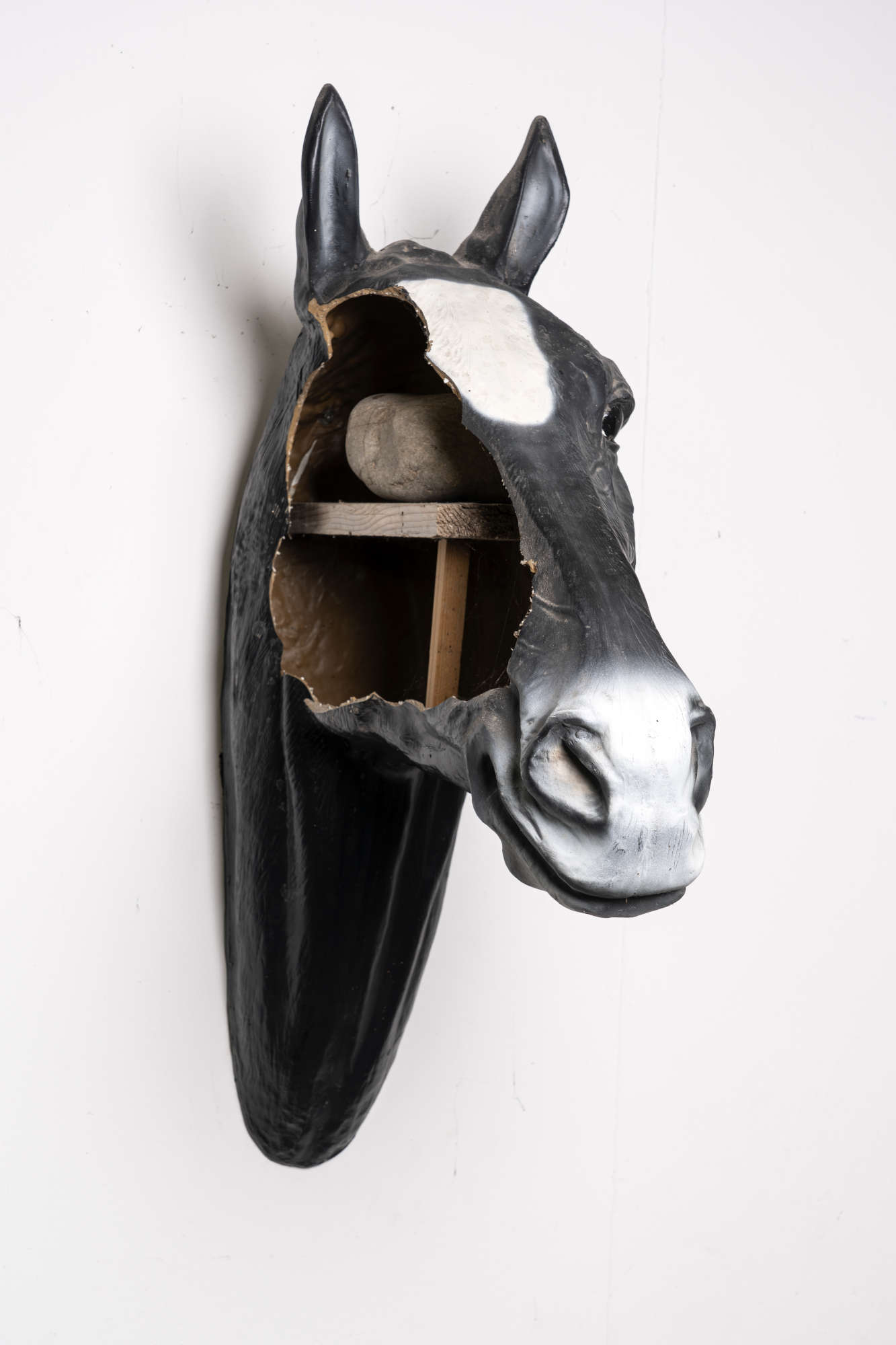

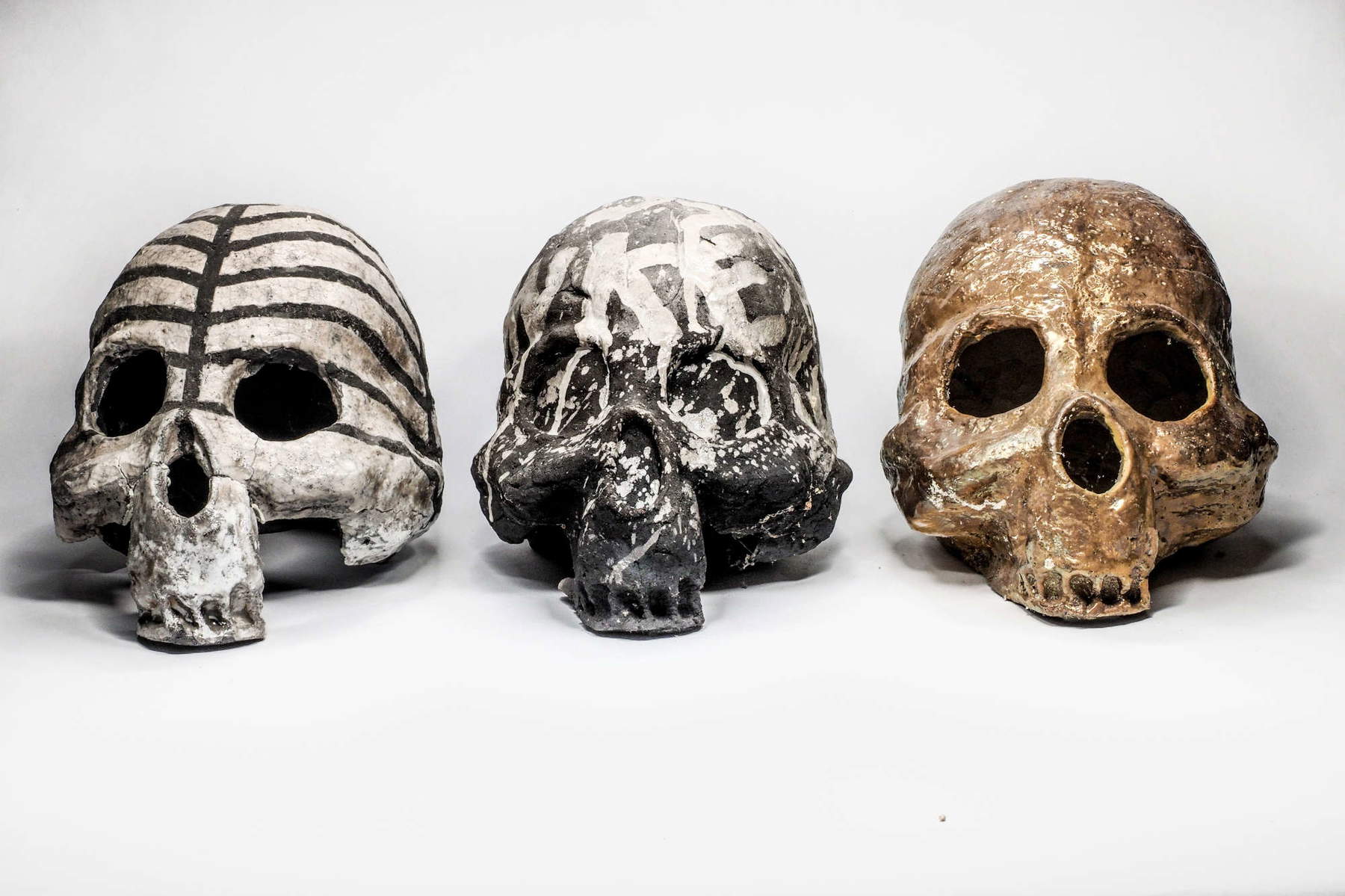
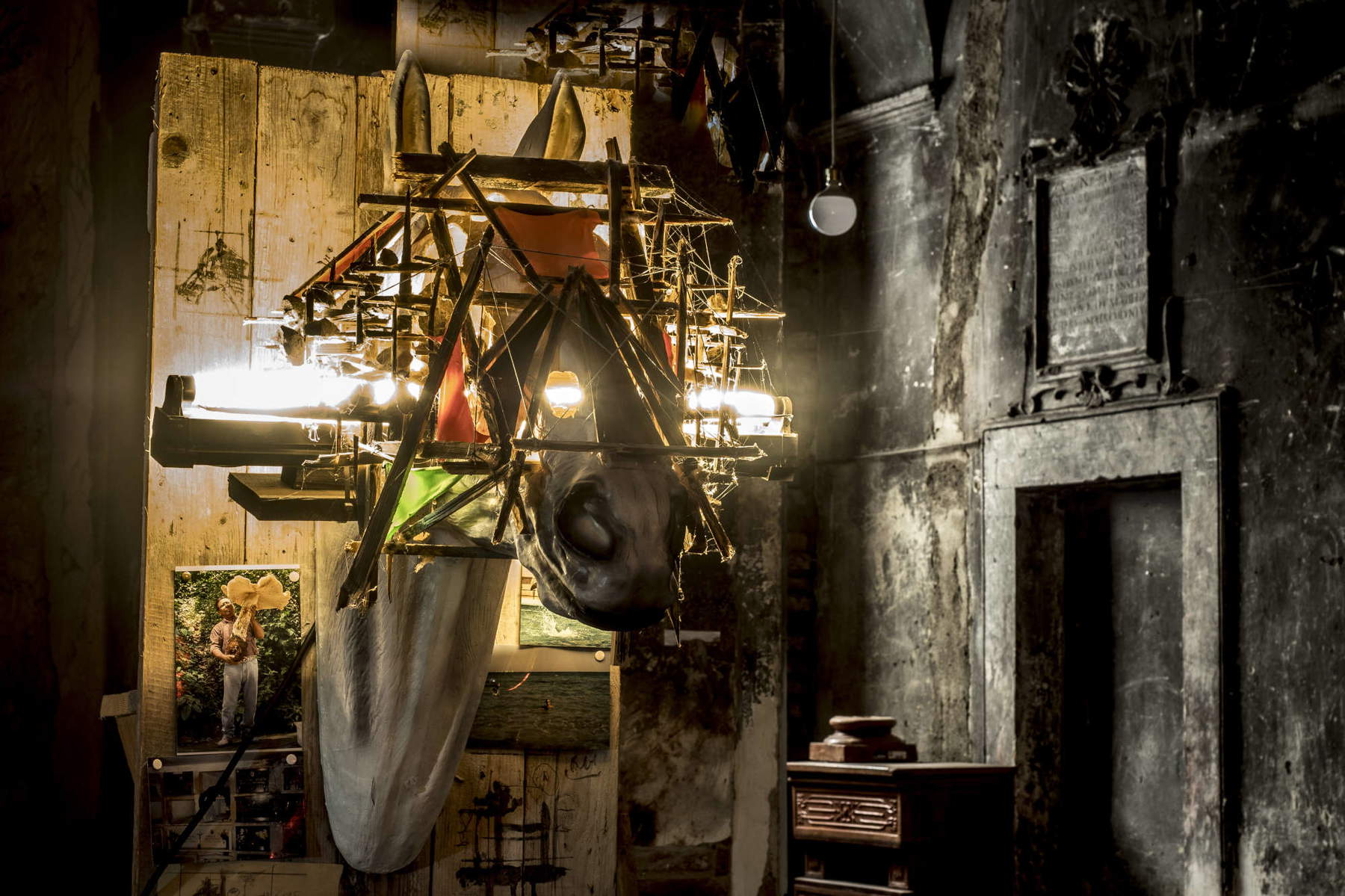
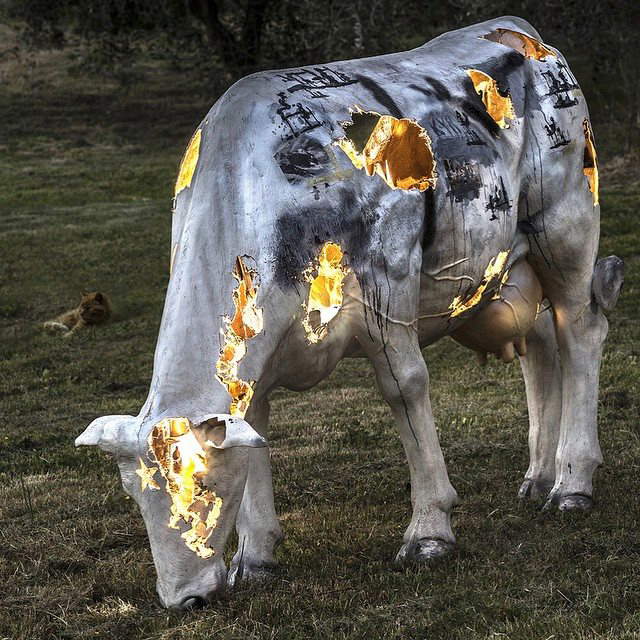

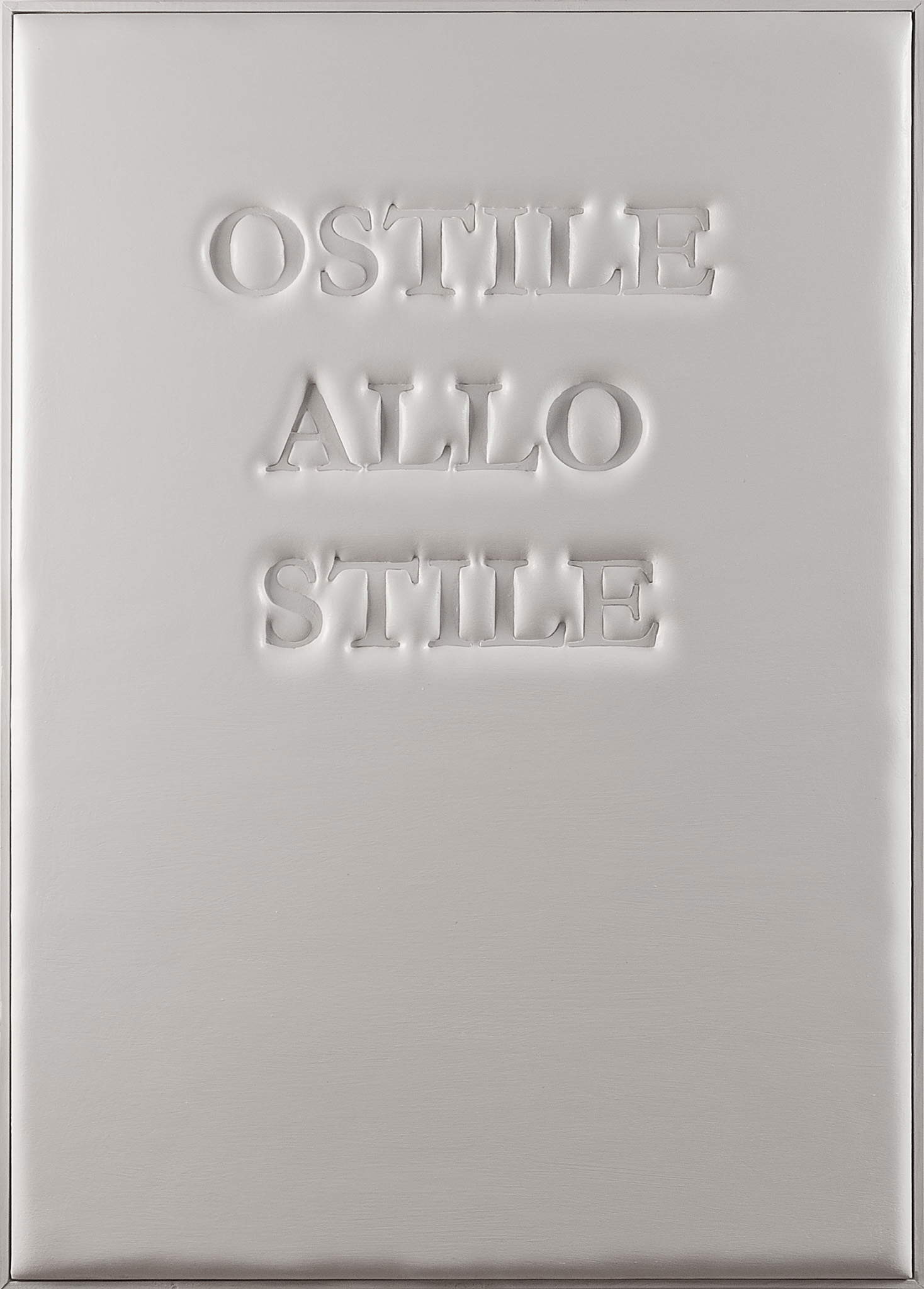
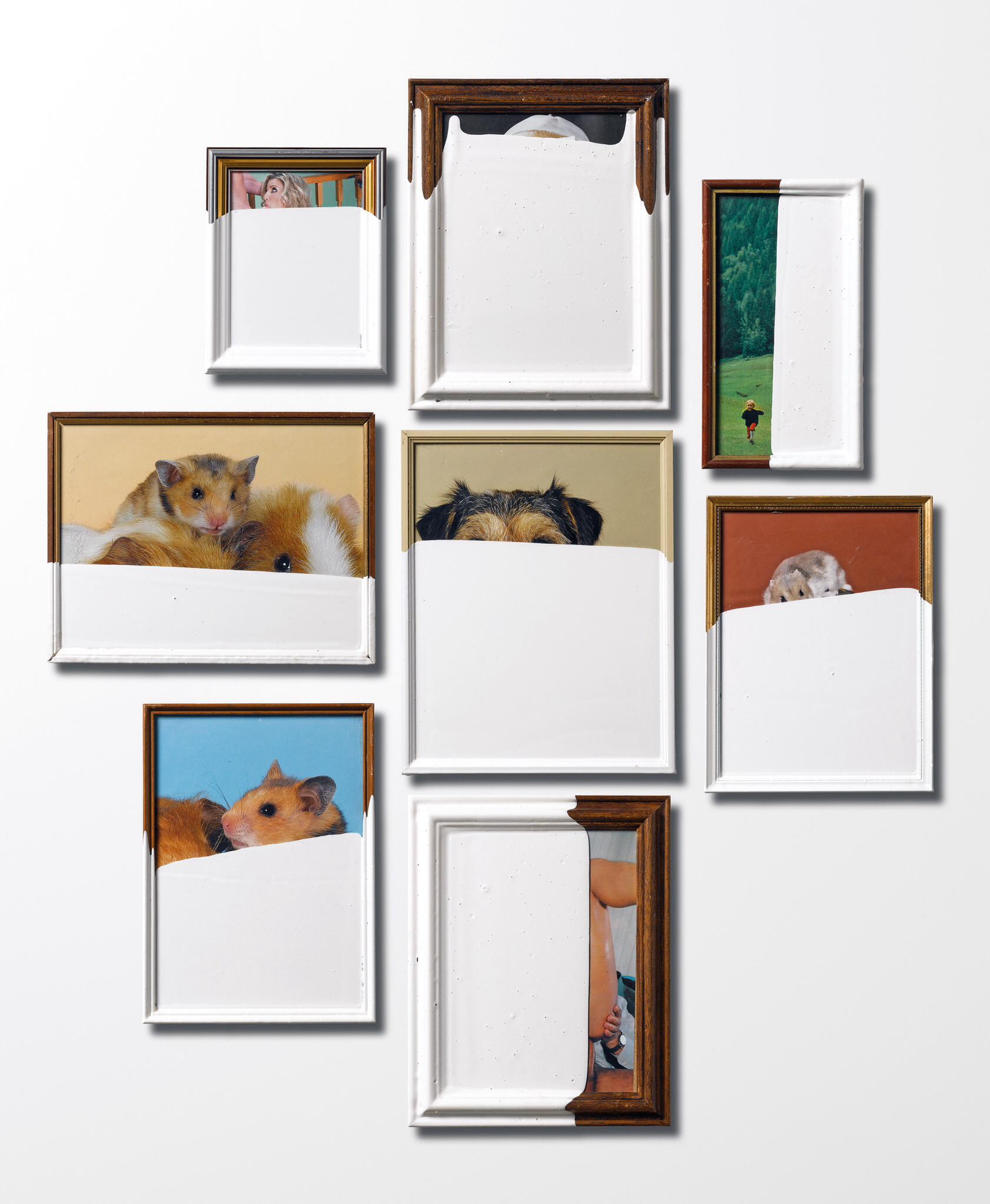
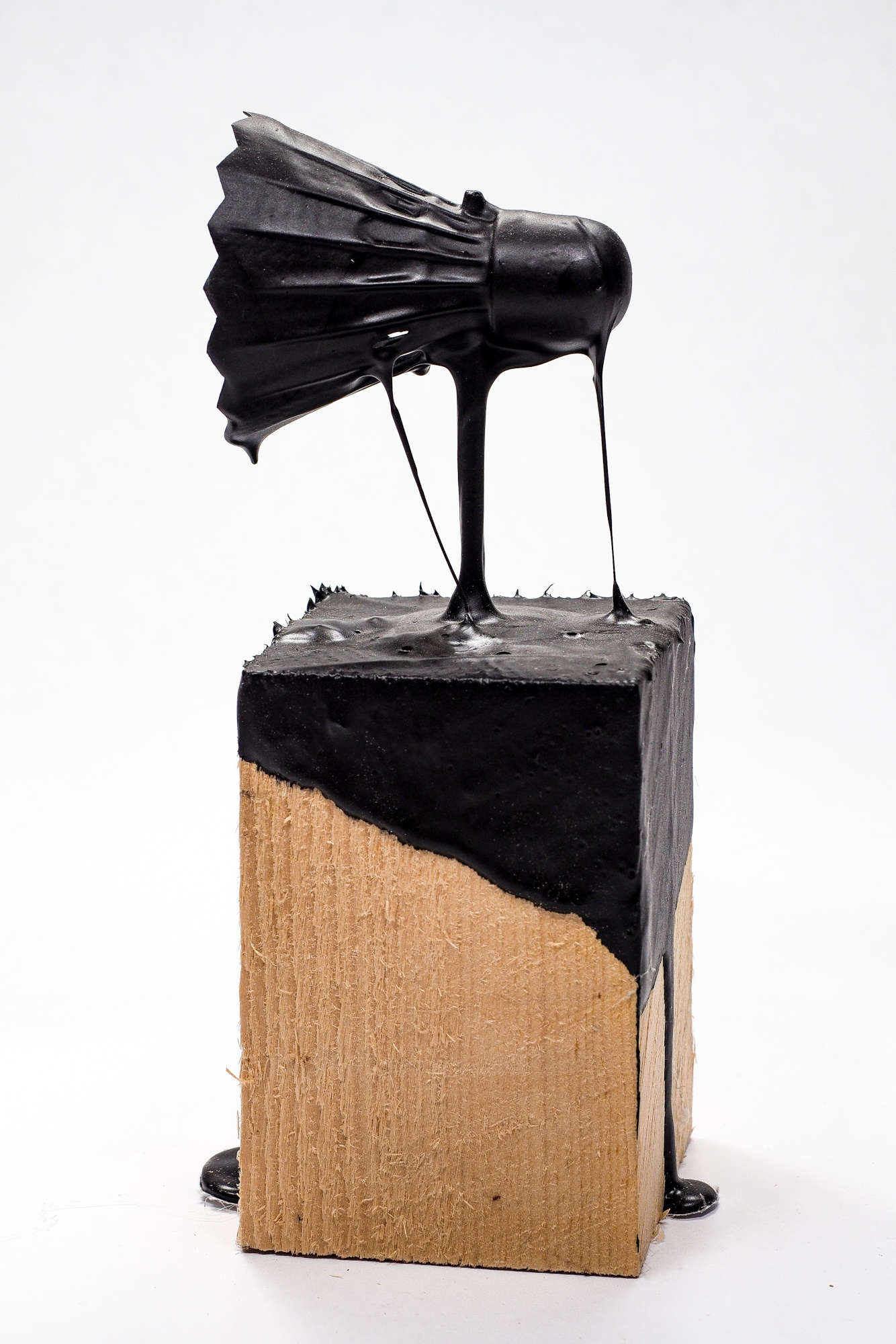
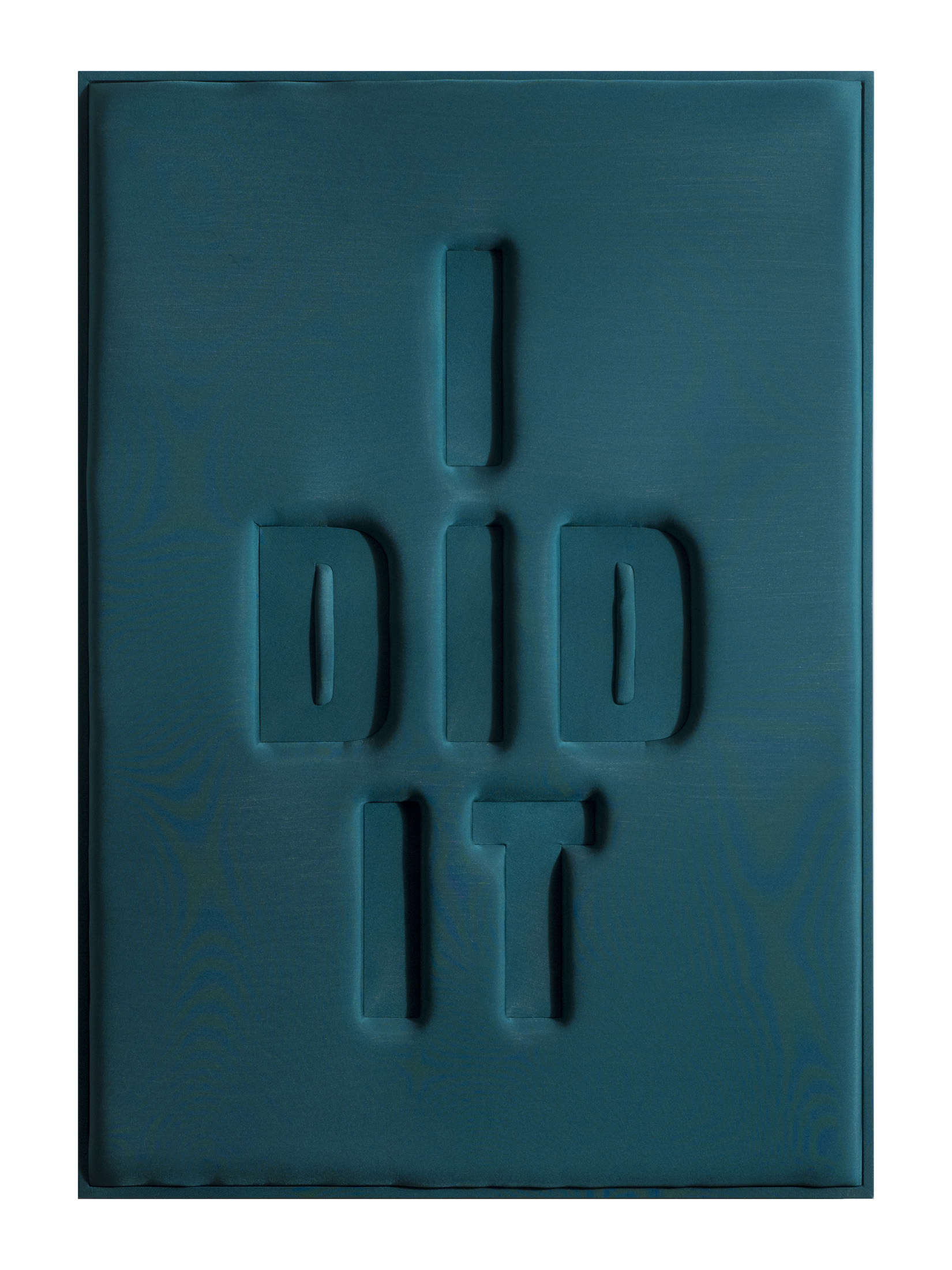
How did the idea of working on padded paintings come about?
From my house in Brufa you can see Assisi and Mount Subasio, a mystical place where St. Francis went on retreat. It has a soft shape and the design is reminiscent of the lines of Burri’s cellotex, which I have always interpreted as Umbrian landscapes. I imagined archaeological excavations, finds, tunnels and hiding places within it that I tried to represent with two-dimensional painting. I would create containers on the canvases to put finds in them wrapped with cloth that I would then soak in wax and pigment. At that time I was fascinated by Pino Pascali’s decapitated animals, Burri’s hunchbacks, and Castellani and Bonalumi’s estroflessioni. Then it was the period of Transavanguardia and the Roman School, and from America came the images of Jean-Michel Basquiat, Schnabel and Mike Kelley. It seemed that painting had nothing more to say with the mythologizing of these young giants, and I felt the need to invent something unique, recognizable, and that would make me independent. By experimenting a lot with foam rubber and working hard I discover this technique that I will use a lot over the years. So I can say that everything was born from the hypnotic energy of Subasio and the sum of my visual experiences until then.
When and how did you meet Guido Carbone and what is your memory of him?
In 1995 I did a group show in Mondovì in Piedmont with artists from Cortona where I met Professor Mantovani who taught at the Albertina Academy who told me that I absolutely had to go to Turin to show the works to important gallerists he knew and that he would make the appointment himself with them. My works in photos did not render, so I would have to show them from life so I devised a diabolical plan with a painter friend from Asti, Fabio Ballario. Basically while I was talking in the office with the gallerist he would support the works quickly in the gallery. So I would load the works in the car, leave from Perugia, pick up Ballario in Asti and we would head to Turin. The appointments were with Bertaccini, Paolo Tonin and Guido Carbone. The plan worked with Paolo Tonin who proposed a group show soon, then at Bertaccini’s where I met for the first time Luca Beatrice who proposed something but my attention was focused on Carbone, this cult gallery owner who had been talked about for a long time, a difficult guy they told me, a tough guy who you didn’t know how he might react. He was in the office, he was nervous, maybe tipsy and asks me where the book is, I say I don’t have it and that I brought the works, which immediately pisses him off and he asks me where these works are, “in the gallery” I tell him, and he gets up nervously heading that way, Ballario had already installed everything, Guido sees the works and starts getting excited, asks me if I want a spritz, I accept, then he calls one of his collector friends and I hear him say there was something interesting. I had made it. Carbone fell in love with my work and protected me with all his might, he was a real talent scout, he had flair and he loved and understood art. He was a gallery owner and a father, always advising and expecting evolutions from the work with experimentalist courage. We were a family with Laura Viale his partner, Stefano Pisano, Pierluigi Calignano, Maria Bruno, Francesco Lauretta and others. When Guido died we all felt lost, we had lost our artistic father who was fighting for us.
Your early works were very colorful and time-consuming, did you have assistants working with you at that time?
To do those works needed help, there was demand, so I took assistants with me. Marco Brinci was my historical assistant, at least ten years in my studio. He was very inventive and worked a lot . He invented machines with vacuum cleaners to mold foam rubber, speeding up the work process consistently. My father called him Archimedes. Brinci had a law degree but always preferred self-employment and creative work, developing an interest in film special effects, robotic mechanics, and materials such as resins and fibers. He had a studio with a steel door that swung open like the one on the Star Trek spaceship, made by him of course. After he finished with me he realized his dream of working for film by collaborating with the Stivaletti studio in Rome. We are still great friends. However, there are outside assistants who have been collaborating with me for decades like Gianni for lacquering and Roberto for laser cutting or my lycra salesmen, we are a bit of a big family after so many years of collaboration.
Following this first phase, how does your path develop?
After years of using this technique and developing many topics in 2005 I switch to lacquers with geometric themes such as Targets, Rinks, Run-Doms and Cages. I do my first retrospective at Palazzo Della Penna in Perugia where I presented my path until then preparing the public for a new abstract-geometric period of mine. Shortly thereafter I presented Cage at Carbone.to, Hubble at Seno Gallery and Rinks &Targets at Trolley Gallery in London and it was here that my needs to explore other fields of expression began. London was a dream and gallery attendance gave me the opportunity to meet important artists and visit galleries in the East End that were very much in vogue at that time. The British inspired me greatly in my change, that mix of Victorian and anarchy was irresistible. Shortly thereafter I did a double solo show in Milan, Spariamo bang diventare invisibili at Galleria Seno and Studio Visconti and Tutti gli insetti vengono da un altro pianeta in Havana in Cuba at Galleria Villena where my convictions to change began to seriously radicalize especially after visiting the studios of local artists where I saw incredible works made at zero cost with sublime techniques. Bravo indeed to the Cubans, a people educated and cultured in the arts. I conclude the abstract-geoemetric cycle in this wonderful island last revolutionary resistance on the planet to plan immediately afterwards an escape from Italy and head to Berlin where there is the largest artistic community in the world and it is in this fantastic city, where nobody knows me, that I can re-explore new expressive paths finally in total freedom.
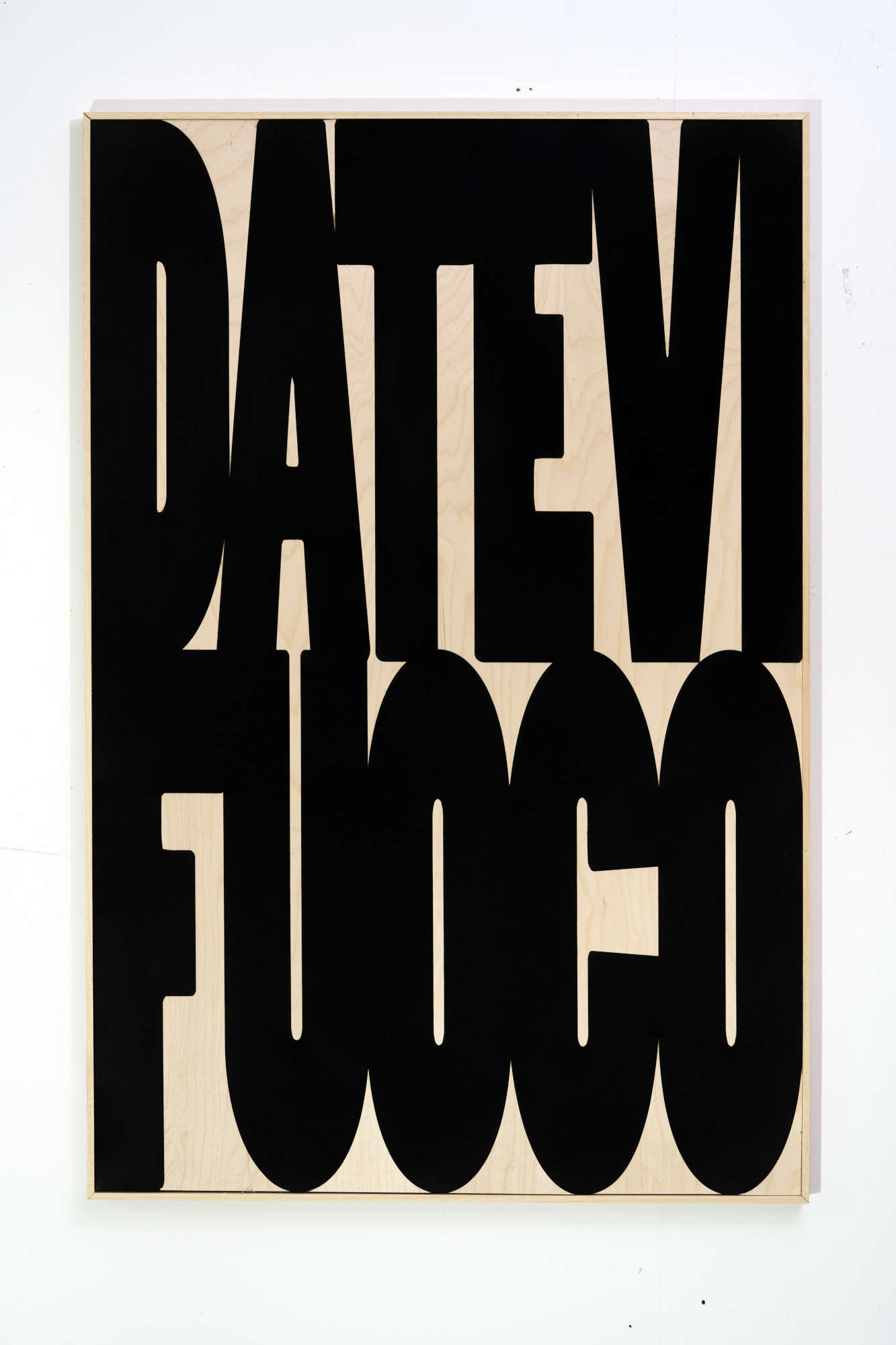
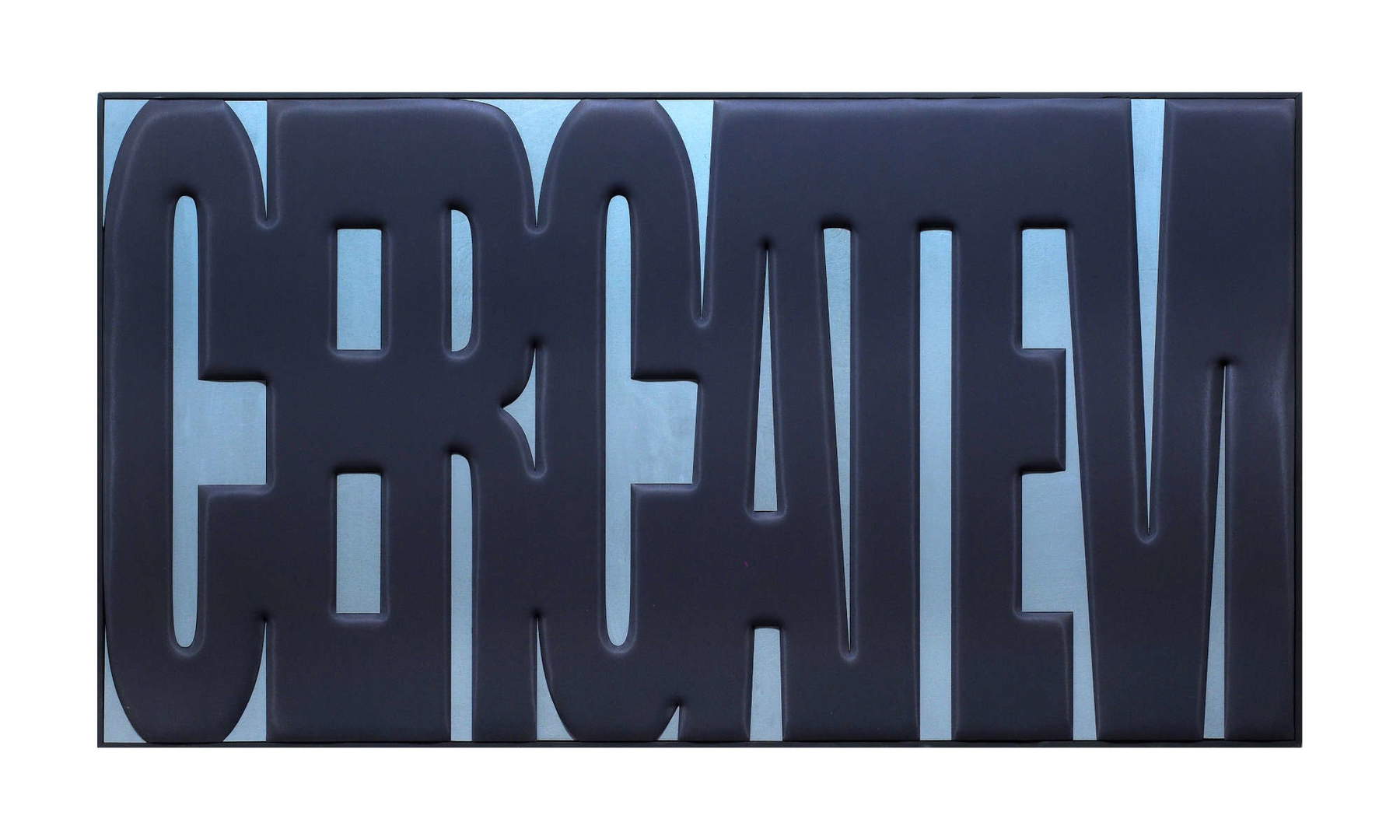
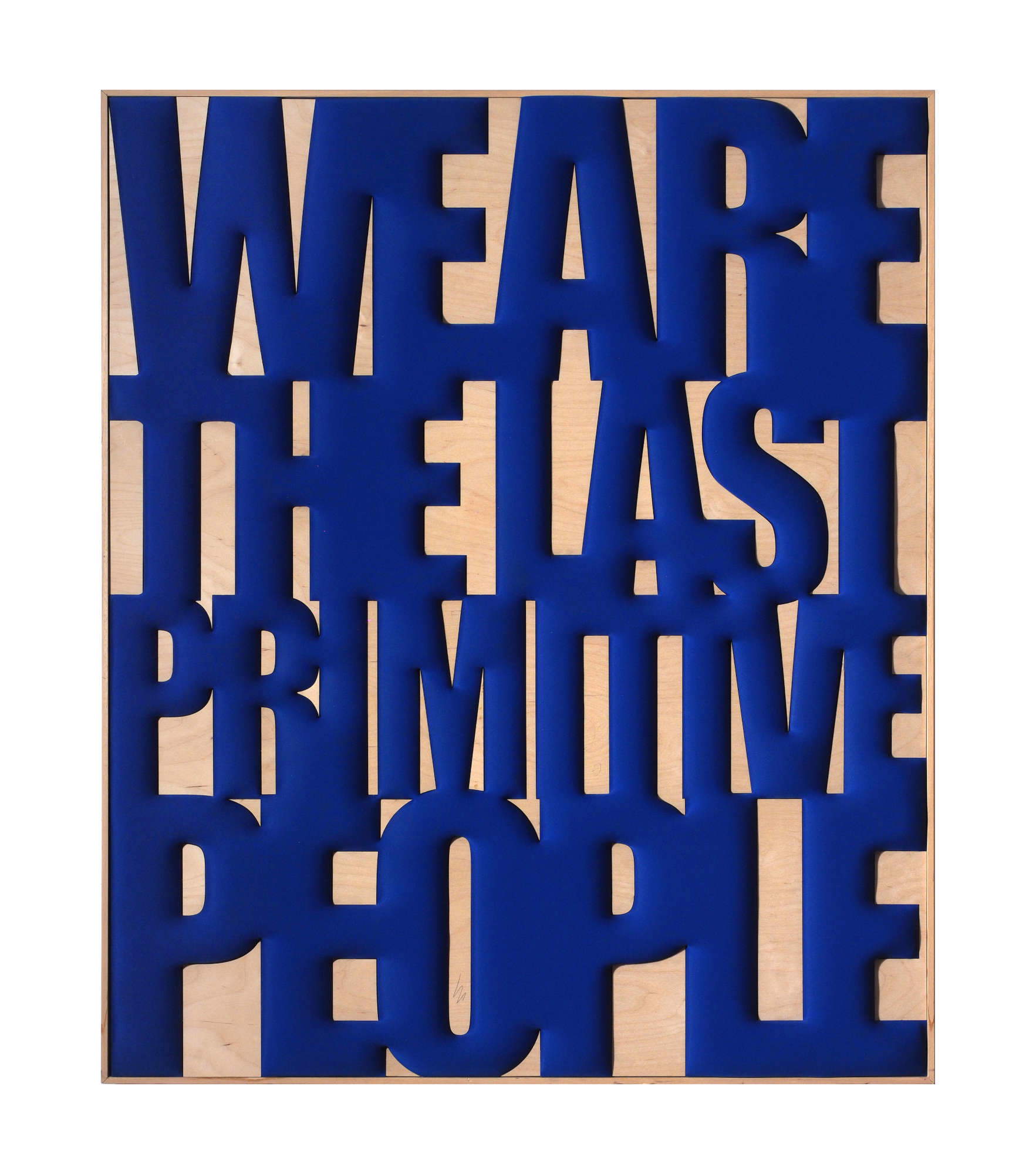
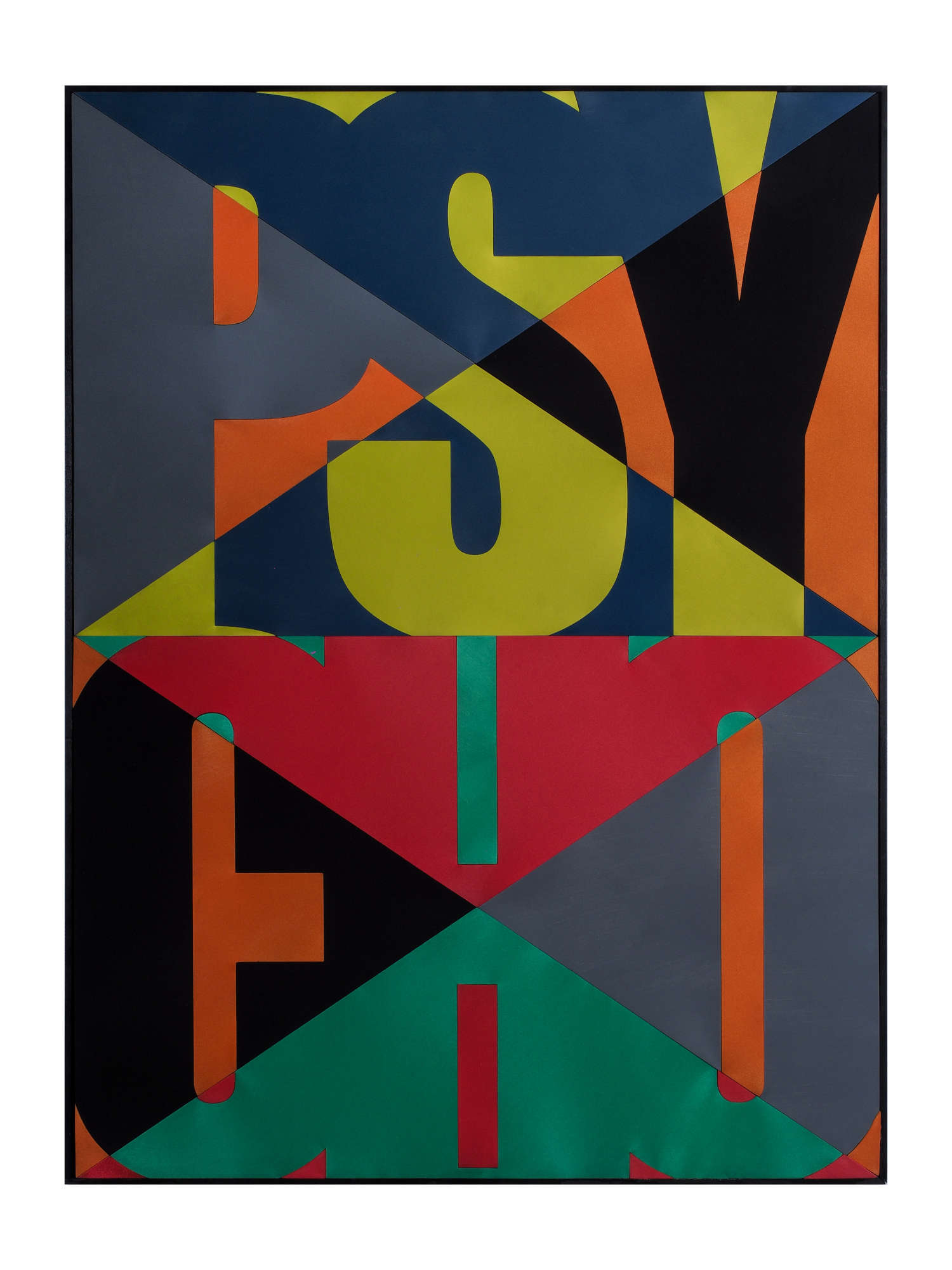
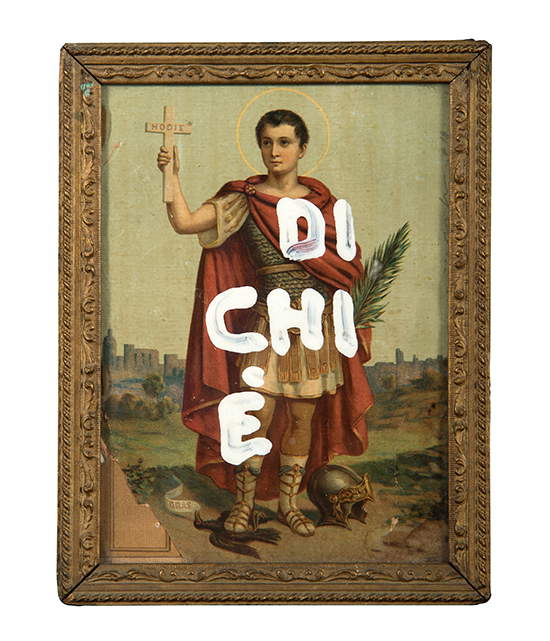

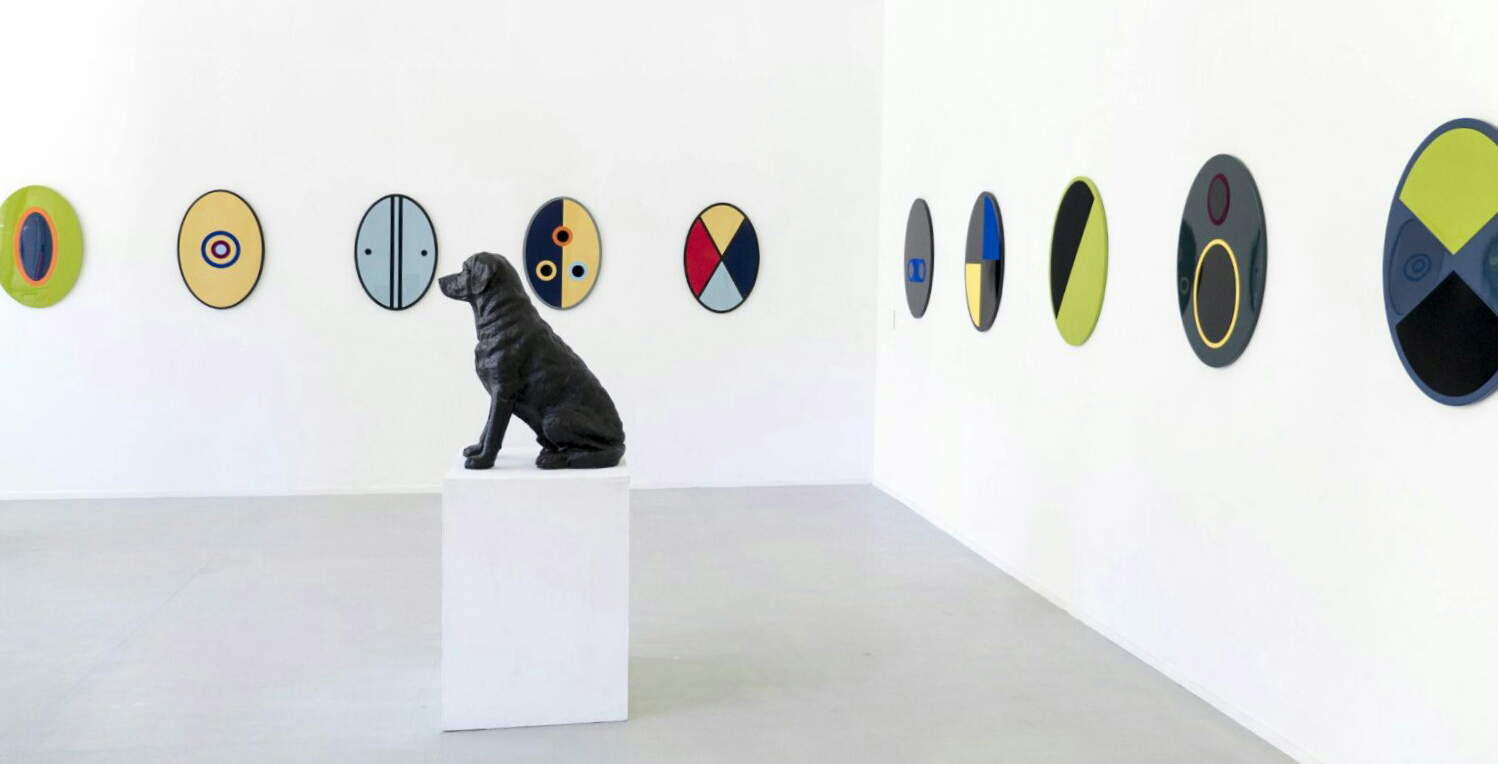

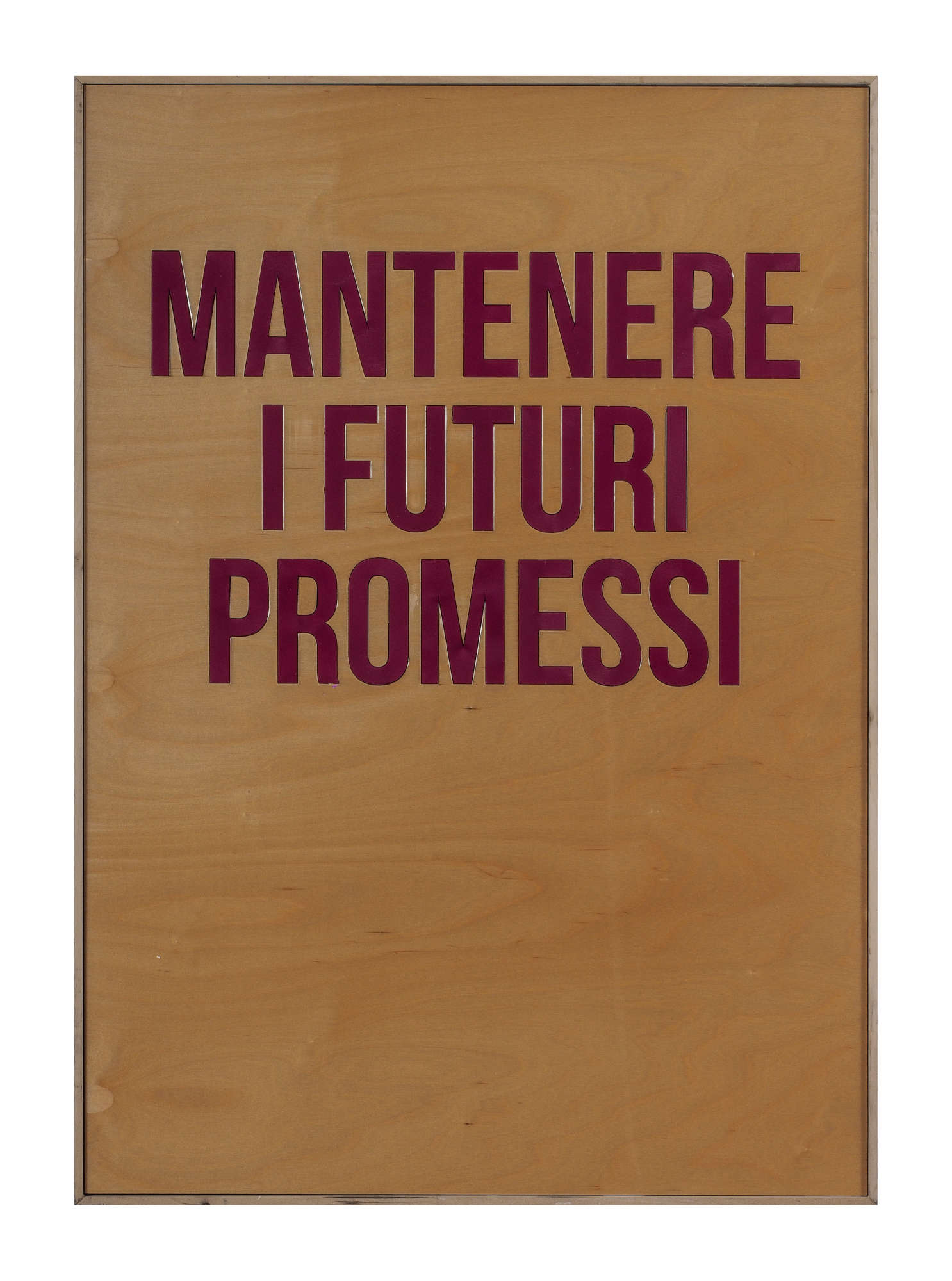

When do lettering paintings come along?
Padded lettering began in Berlin with Speed and soon after I made Escape, which I presented at the solo show at the Grimmuseum We don’t need enemies. Actually The lettering I was already using in the 1990s, I still have a lettering “Shit” from ’94 that I never presented. However, I started doing them more persistently in 2014 with the first Date Fire. I was looking at Christopher Woll’s work at that time and thinking about the communicative power of Boetti’s tapestries so I was looking for phrases that worked both on a formal level but more importantly that had a communicative impact... it wasn’t easy.
What is the origin of the phrases or slogans you use in these works?
This is precisely why I started a collaboration with Davide Banda, who in my opinion is one of the most interesting poets around. Bella la folla, Il sole non ama Berlino, Quando vivo faccio finta di niente, Mario cammina come se se fosse in spiaggia, Mai Ali, anyone with a good literary palate understands that we are facing a new phenomenon of contemporary hermetic poetry. I am lucky to work with him. There are also my phrases Give Yourself Fire, Hostile to Style, What You Think of Me is You, but he is better at it.
It seems to me that in these works compared to the early ones there is more radicality in both content and color choices?
It depends on the works and the moods. The visual impact is definitely less youthful than the early works made with more or less the same techniques but sometimes they have the same irony and cynicism as back then. I have always been torn between making people scare or laugh. I still distinguish when I make tragic or ironic art. In painting I am definitely more tragic but I actually have a lot of fun doing it. Then there are the works like the Skulls, Flowers of Pine and the guns that I present with Spazio Rivoluzione in Palermo that are collectible works that go back to my early productions.
In your opinion can politics and poetry go together?
Definitely. Poetry is political when it talks about humanity but also when it expresses feelings about nature so it becomes ecological political thought, when it passionately tells about the life of another people, that is called inclusiveness,curiosity and openness to different cultures, it is political.
In what other directions does your work develop?
Basically I’ve been sending out multiple cycles for many years, some of them are finished right away but some of them come back like drawing which I’ve always practiced but also large format painting, then there’s all the photographic work, painted lettering, animal sculptures, upholstery, diving, videos etc. I have created a lot so far, a great blessing to have had the opportunity to express myself and I hope to keep going for quite a while longer, there is so much to say and until I run out of ideas I keep going.
Warning: the translation into English of the original Italian article was created using automatic tools. We undertake to review all articles, but we do not guarantee the total absence of inaccuracies in the translation due to the program. You can find the original by clicking on the ITA button. If you find any mistake,please contact us.